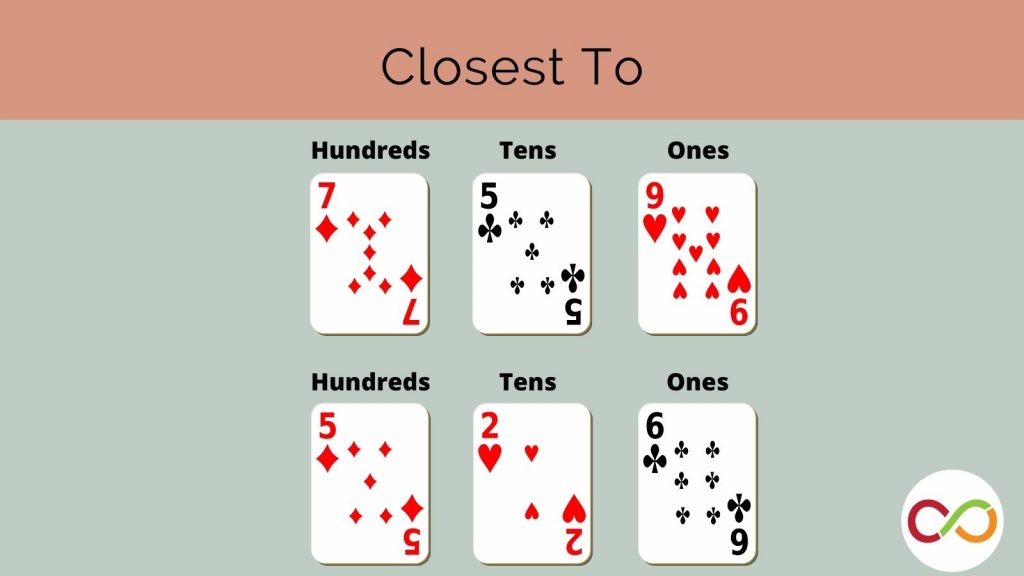Golf
Primary/Junior (Age 6 – 12)
Curriculum Goal
Primary: Number Sense
- Use the properties of addition and subtraction, and the relationship between addition and subtraction, to solve problems and check calculations.
Junior: Number Sense
- Use the properties of operations, and the relationships between addition, subtraction, multiplication, and division, to solve problems involving whole numbers, including those requiring more than one operation, and check calculations.
Context
- Two to four students and the teacher meet in a group.
Materials
- In-persion version
- One standard 52-card deck
Online version
- Game file (Playingcards.io upload instructions)
- Video conference capabilities
Lesson
- Each child starts with a 3 x 3 grid with one card in each place (nine cards total).
- The goal is to reduce the value of cards by swapping them for cards of lesser value.
- Each player takes turns swapping a card from their grid with one in the discard pile or from the deck.
- Aces = 1; Numeric cards = face values; Queen and Jack = 10; King = 0; Joker = -5.
- If a child gathers three identical cards in a vertical column the value of the column becomes zero unless there are three jokers which would reward the player with a score of -15.
- To start, children simultaneously select two of their cards to flip up and leave all other cards in the grid face down. The other cards remain unknown until they are swapped out.
- The dealer flips the top card of the deck face up and lays this next to the deck in a discard pile.
Students take turns choosing to draw a card from either the deck or discard pile. - Then, students decide to:
- Use the card by switching it with a face up or down card in their grid.
- Or discard the drawn card if it is not useful.
- The play continues until one person wants to lock in their grid. They can signal this by saying “lock” on their turn.
- Once a player declares lock, they forgo their move, and everyone has one more turn before the game is over.
- After everyone’s final turn, each player turns over all their cards and calculates the total.
- Score the hands by adding up the total in each column, and then add the totals of each column.
- E.g., column 1 = 0 column 2 =20 column 3 = -3 → Total score = 17
Look Fors
- Do children make strategic decisions about swapping the cards from their grid to obtain the lowest total?
- Can children accurately total their score?
Share this lesson
Share on facebook
Share on twitter
Share on email


